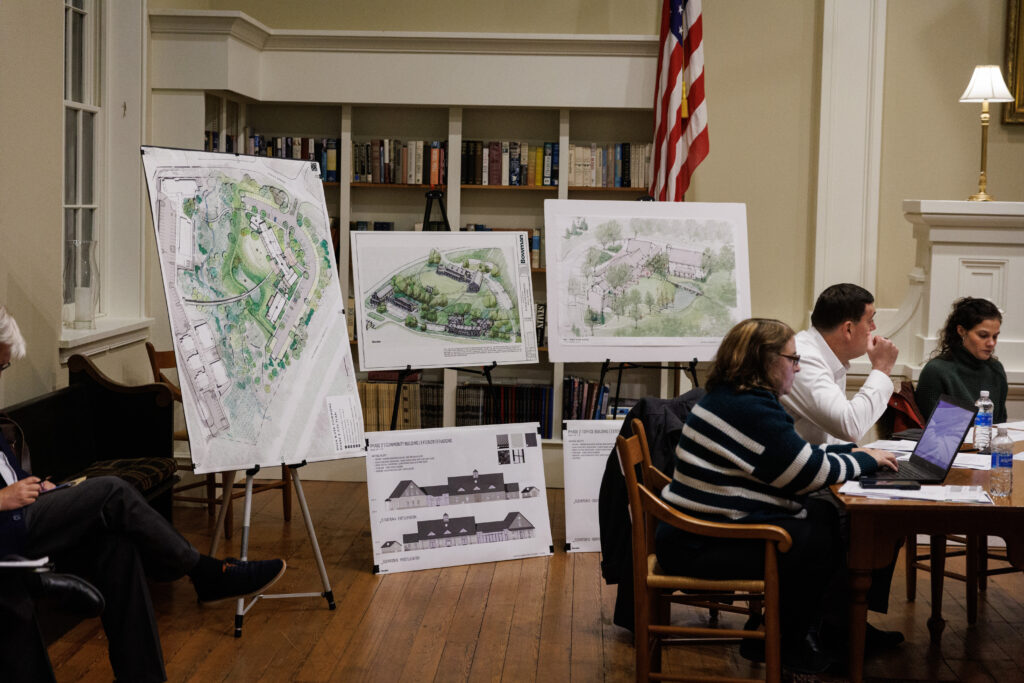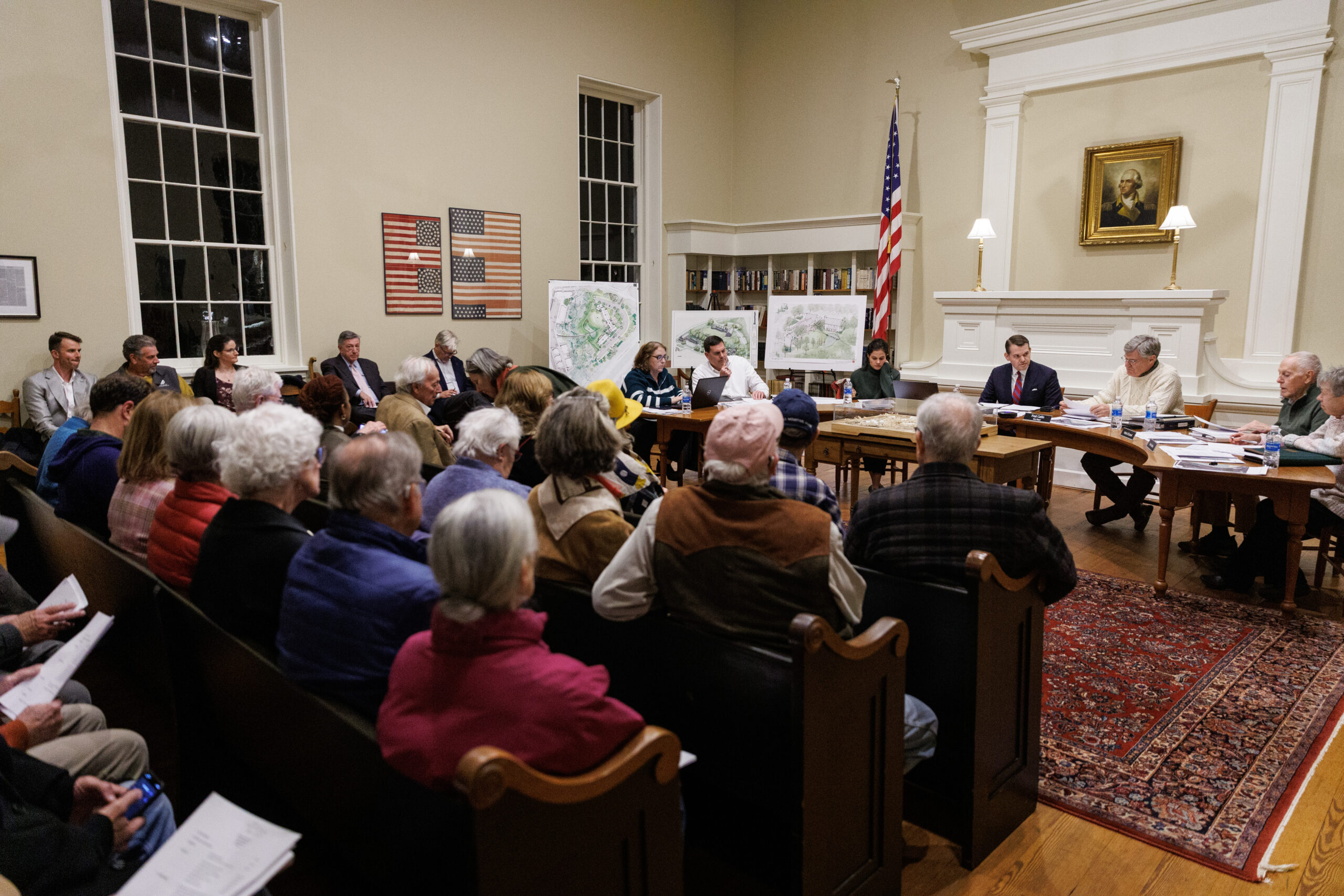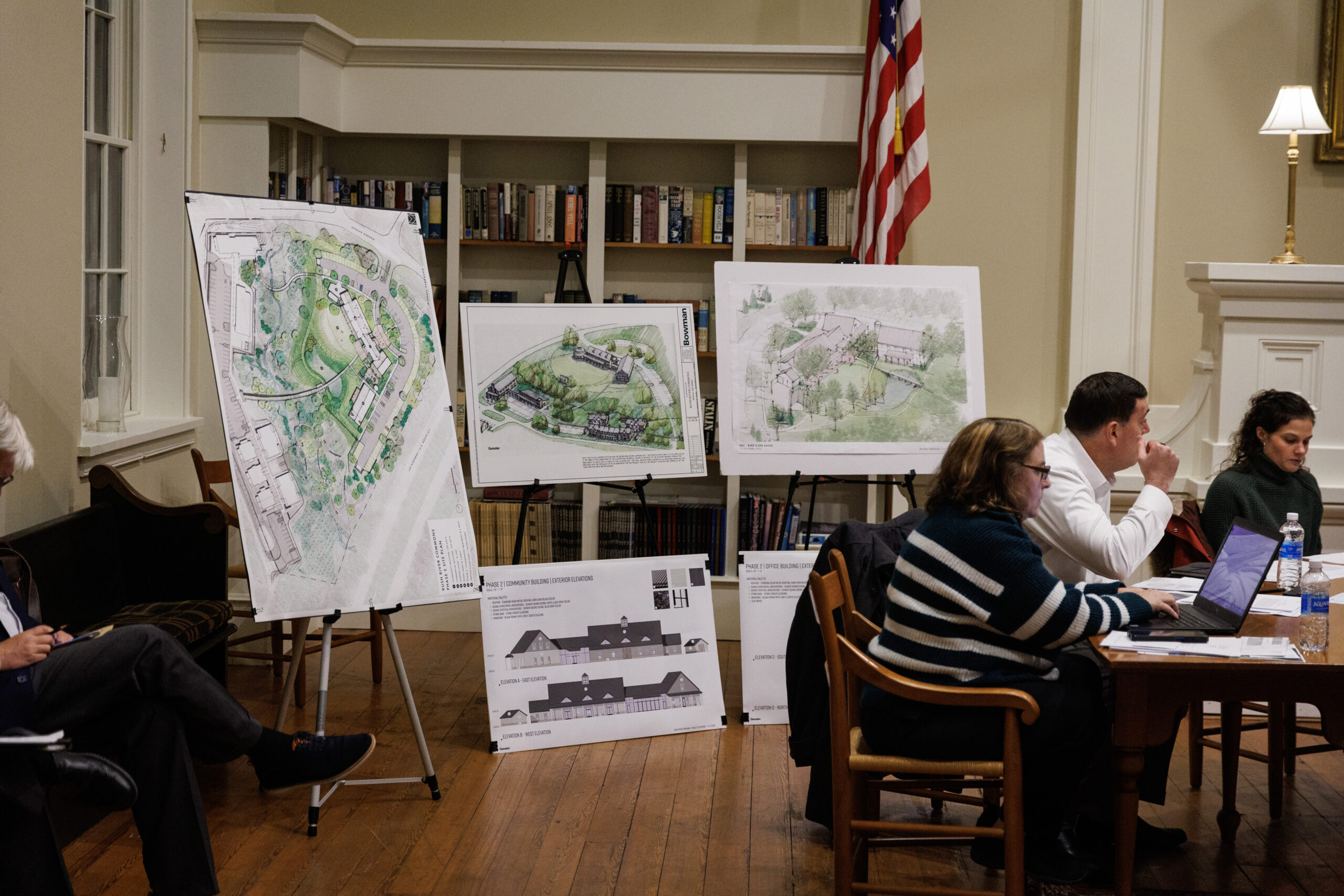The Washington Town Council unanimously approved development of Rush River Commons’ second phase, despite a recommendation of denial from its Planning Commission last month.
The development will be on 3.9 acres where Warren Avenue meets Lee Highway, adjacent to Rush River’s first development on Leggett Lane containing the Rappahannock Food Pantry, an office building and affordable housing units.
Prior to the vote, Mayor Joe Whited told the council and gallery packed with members of the public: “Many of us … have really only been residents for the last 30-some-odd years, and we have known a town that is very quiet … but that has not been the case for much of the town’s history.
“You don’t have to go very far back to find a town that had a grocery store, a bank, a five-and-dime store and a tavern, and a thriving main street … however, I think we’re starting to see in Washington a move back to that sort of community,” Whited said. “We have an opportunity by further embracing business and supporting very ‘small-d development’ and thriving communities, to make that trend continuous.”
Black Kettle LLC, the company overseeing the Rush River project, submitted an application for a Planned Unit Development (PUD) that requests more flexible zoning rules — specifically it wants to use the same PUD application approved for the first development site for the second one.
The plans for the property included a 12,000-square-foot community center and a 9,000-square-foot office building. The council added the condition that buildings on the property cannot exceed 20,000 square feet overall.
“We actually had a lot of discussion on this, we voted 3-0 not to recommend adoption,” Planning Commission Chair Caroline Anstey said to the council Monday before the vote. “We were incredibly enthusiastic about Rush River one … we would like to feel as enthusiastic about this one.”
In an interview Tuesday, Anstey said the Planning Commission is tasked with looking at technical issues and raising them to the Town Council, but the two bodies will not always agree. “This is democracy in action,” she said.
Anstey told the council that the commission rejected the application for three main reasons:
- There was no clear sense of the use for the buildings, and the plans were not in accordance with the Comprehensive Plan.
- The PUD was brought together for phase one, and approved because affordable housing was wanted, but the second phase is very different, and housing is prohibited.
- The development is too big and doesn’t blend in with the rest of the town.
‘What is too big?’
“This particular property is a gateway to the town,” Vice Mayor Fred Catlin said during his remarks. “I think there’s a lot of benefits to having this, and I would say rhetorically — what is too big?”
After a presentation from members of the Rush River Commons’ team, attention shifted to the full town hall for a public comment period, where close to a dozen town and county residents spoke up in support or opposition of the application.
Judy DeSarno, a town resident, said a community center is “badly needed.” She said the office building, although large, could have many services like medical offices. “We need to serve all the needs of our county … we are not just a beautiful little town,” DeSarno said.
She added that a “devil’s bargain” was made when the town and county agreed to prohibit more housing in Rush River Commons during negotiations for bringing Rush River into the town’s boundary, a legally-binding agreement that would take a prolonged legal process to reverse.
Joyce Wenger, president of Rapp at Home and a Flint Hill resident, reiterated the need for the community center, and also commented on the space and look. She said when the food pantry building was being planned and constructed, it looked “big and imposing,” but now that it is finished, she said it is a beautiful space in addition to serving the community.
“I have full faith that this will be a beautiful and positive contribution to our community, both for its need and for the way it looks. So I encourage you to support this,” Wenger said.
“I think I have faith in Black Kettle to make it fit,” town resident Nancy Buntin added.
Mayor emeritus John Fox Sullivan voiced his opposition to the size of the development. Sullivan questioned the purpose of the office building, and said there doesn’t appear to be a huge need for it.

The Washington Town Council hosted a packed house Monday at its meeting where it unanimously approved an application for Rush River Commons phase two. (Photo/Luke Christopher)
“There’s no question in my mind Chuck [Akre] and his family and these people are nothing but great talent trying to put these things together,” Sullivan said. “It’s just in my mind, it’s too big and too much, and if there was a need I would get it … I wish I weren’t going against my good friend Chuck.”
During the council’s comment period, Catlin said he has had two nonprofits approach him saying they would use the office space, and said the town’s Comprehensive Plan includes proposed uses for the gateway of the town such as development that would maintain the town’s original streets and be “visually separate from the townscape.” He said it’s a “key piece of property” and the proposed use fits into the Comprehensive Plan.
He thanked Chuck Akre, the financial backer of Rush River Commons, for his generosity to the community.
Mayor Whited pointed out that the council in the last several years has approved a 15,000-square-foot building in the historic district — The Inn at Little Washington’s new spa complex — and the expansion of another building that will be over 11,000 square feet when completed.
“I remember the first time I was leaving town, I had my cup of coffee, and I came down and they had just started clearing for Rush River I — and I literally spilled my coffee all over the front of my car, and thought ‘Oh my God, what have we approved?’” Whited said. “Now I pass by it, and I don’t blink … it blends in.”
Whited said he sees the community center also acting as a “conference” center, possibly attracting businesses and groups from out of town and bringing in additional dollars at a low impact to the community.
He said between now and when construction is completed, the use could evolve and change. “We are just approving the envelope in which construction can happen on this campus,” he said.
Councilmember Jeanne Goodine said she sees the need for the community center, but not as much of a need for office space.
“All of the comments, as well as common sense, indicate that the community center is something that is needed, would be welcomed and we all could enjoy. I’m less convinced about the office space,” Goodine said.
The council’s newest member, interim treasurer Deborah Harris, suggested different uses of the office space — like a coffee shop or farmers’ market or other uses allowed in the special use permit — should be explored.
Rush River engineer Stephen Plescow said phase one is filled up except for one retail space, and there are other nonprofits and community services that “have no place to go.” He said a lot of the available spaces in town are not “purpose-built” office space, but rather are converted homes and buildings that do not serve large organizations well.
“They need modern office space with parking spaces, ADA-accessible bathrooms, internet, things you don’t get with converted office space,” he said. “People who we have in phase one would have left town, or left the county, because they had nowhere else to go. We think there’s a need for phase two.”
Plescow added that the team has “people they are talking to” about using the space, but they can’t get any further than basic discussion until an approval comes through.
“We’re obviously interested in doing what works,” Chuck Akre said.
Design plans will need to be approved by the town’s Architectural Review Board (ARB) before construction can begin.
Other town business
The ARB is looking for applicants for a vacant position on its board after former chair Deborah Harris moved to her position on the Town Council. Town Administrator Barbara Batson said letters of interest should be submitted to the town by Dec. 2.





